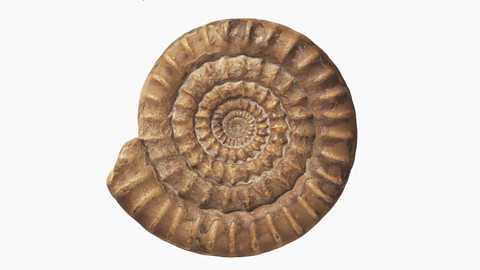Evidence for evolution - rock fossils
Fossils

A fossil is the preserved remains of a dead organismLiving entity, eg animals, plants or microorganisms. from millions of years ago. Fossils are found in rocks and can be formed from:
- Hard body parts, such as bones and shells, which do not decay easily or are replaced by minerals as they decompose.
- Parts of organisms that have not decayed because one or more of the conditions needed for decomposition are absent. For example, dead animals and plants can be preserved in amberHardened tree resin., peat bogs, tar pits, or in ice.
- Preserved traces of organisms, such as footprints, burrows and rootlet traces - these become covered by layers of sedimentSmall fragments of rock and soil that form layers., which eventually become rock.
The fossil record
Fossil remains have been found in rocks of all ages. Fossils of the simplest organisms are found in the oldest rocks, and fossils of more complex organisms in the newest rocks. This supports Darwinās theory of evolution, which states that simple life forms gradually evolved into more complex ones.
Evidence for early forms of life comes from fossils. By studying fossils, scientists can learn how much (or how little) organisms have changed as life has developed on Earth.
There are gaps in the fossil recordPreserved evidence of life that provides information about the history of life on Earth. because many early forms of life were soft-bodied. The soft parts of organisms do not form fossils well. This means there is little information about what these organisms looked like. Any traces of fossils that there may have been were likely destroyed by geological activity. This is why scientists cannot be certain about how life began. They do not have enough evidenceInformation or material that shows something is true..
Fossils provide a snapshot of the past and allow us to study how much or how little organisms have changed as life developed on Earth.
Evolutionary trees
Evolutionary trees are used to represent the relationships between organisms. Branches show places where speciationThe formation of new and distinct species in the course of evolution. has occurred, and a new species has evolved.
In this evolutionary tree, species A and B share a recent common ancestor. Species A is therefore most similar to species B.
Species F and G also share a recent, yet different, common ancestor, which itself shared a common ancestor with species E. All seven species share a common ancestor, probably from the distant past. The information is collected from a variety of sources, for example, fossil records and DNA sequences.